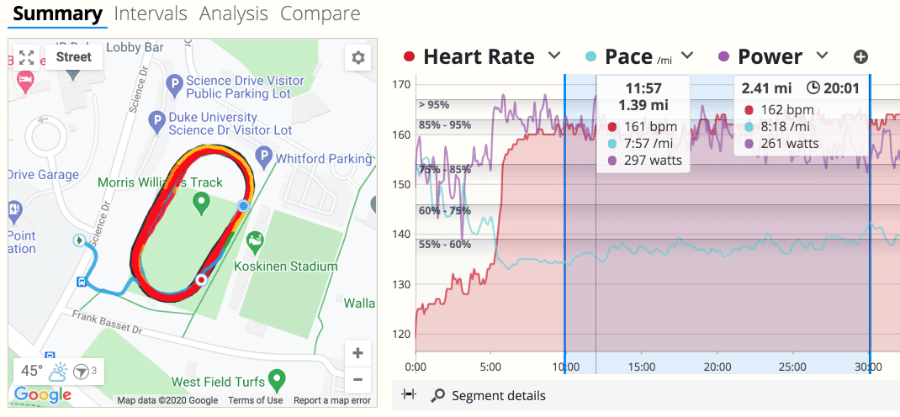At its core, running is simple: you throw one foot in front of the other and plod along. Things can get a little more complicated when many runners share the same space, such as at a running track. However, if you follow a few unwritten rules, you will have a smooth experience. Everything you need to know is in this post below.
Why run at the track? It's a chance to concentrate on running form and pace without needing to slow down for traffic or tree roots on trails. Many tracks have special coatings that add spring to your step and lessen impact forces. It's always beneficial to mix up your workouts, so visiting the track a few times a month will only make you stronger. Lastly, it's not a place reserved for elite runners, the track is for everyone.

1) Try to find the written rules
This post focuses on the unwritten rules of the track, but many facilities have rules of their own. For example, the track in our city has designated "community hours" when anyone can show up and run, and times that are exclusively reserved for specific teams and clubs. Search for this information online before you arrive, and look for signage when on site.
2) Run counterclockwise on the track
The most important rule to remember is the direction to run: counterclockwise (or anti-clockwise). If the track is empty when you arrive, you may be tempted to start running in the direction that has the most allure at the moment, but always make a point of running counterclockwise. If everyone is already running clockwise when you arrive, it's better to join them to avoid collisions, but in general, counterclockwise is the best choice.
3) When running, use the innermost lane
The innermost lane, or the lane all the way to the left when running counterclockwise, is reserved for people who are running. You can use this lane even if you're moving at a slow pace. When it's time to take a rest or a walk, be sure to move to the outer lanes to clear the way for active runners.
4) Always remain aware of other runners
The track is a shared space. Show your community the respect it deserves by always staying aware of the other runners. When entering or exiting a lane, be mindful that you're not cutting off another runner. Listen for other runners approaching from behind, and keep an eye on the whereabouts of the others as you make your way around. Using headphones can inhibit your ability to remain mindful of the other runners.
5) Pass with care and get passed gracefully
Since active runners will be using the innermost lane and running counterclockwise, faster runners will pass on the right. They must be careful not to startle the slower runner or cut them off when they reenter the innermost lane. If the faster runner wants to remain in the innermost lane, they will yell "Track!" as they approach, at which point the slower runner must move to the right.
6) Don't come to a complete stop
While it's common for olympiads to collapse on the track after crossing the finish line, this is poor behavior at the community track following a routine workout. Lanes are for those in motion. When you need to come to a complete stop, move to an appropriate area off to the side. Respect the field as well. Don't nap on the pole vault mat or take a refreshing dip in the steeplechase water jump.

Data from a threshold track-running workout in SportTracks
More tips for running track...
- Consider counting your laps. A complete loop is 400 meters and 4 laps equal a mile. While it's strongly advisable to record your workout with a running watch or a mobile app so you can analyze heart-rate data and other metrics, GPS accuracy can struggle with the tight and exact nature of the course. Staying aware of your laps and times will provide accurate distance and pace.
- You can greatly improve the accuracy of your running watch by using a footpod sensor and assigning it the role of capturing pace, distance, and cadence in your watch. The Stryd footpod is an excellent option that doesn't require calibration, however it is expensive. When choosing a footpod, be sure to first verify that it's compatible with your watch.
- The track is the perfect environment to execute specific tests to determine your current fitness level. If you run with a heart-rate monitor, you can perform an LTHR test. This will provide your Lactate Threshold Heart Rate and your Functional Threshold Pace. Both of these metrics represent the maximum you can consistently maintain for one hour. You can repeat this test every six weeks to see if your training is being effective.
Thanks for checking this out! You can learn more about endurance sports training in our Heart-Rate 101 and Running Form 101 articles.
| Article written by Sam Mallery, Director of Marketing, Zone Five Software Inc. |
